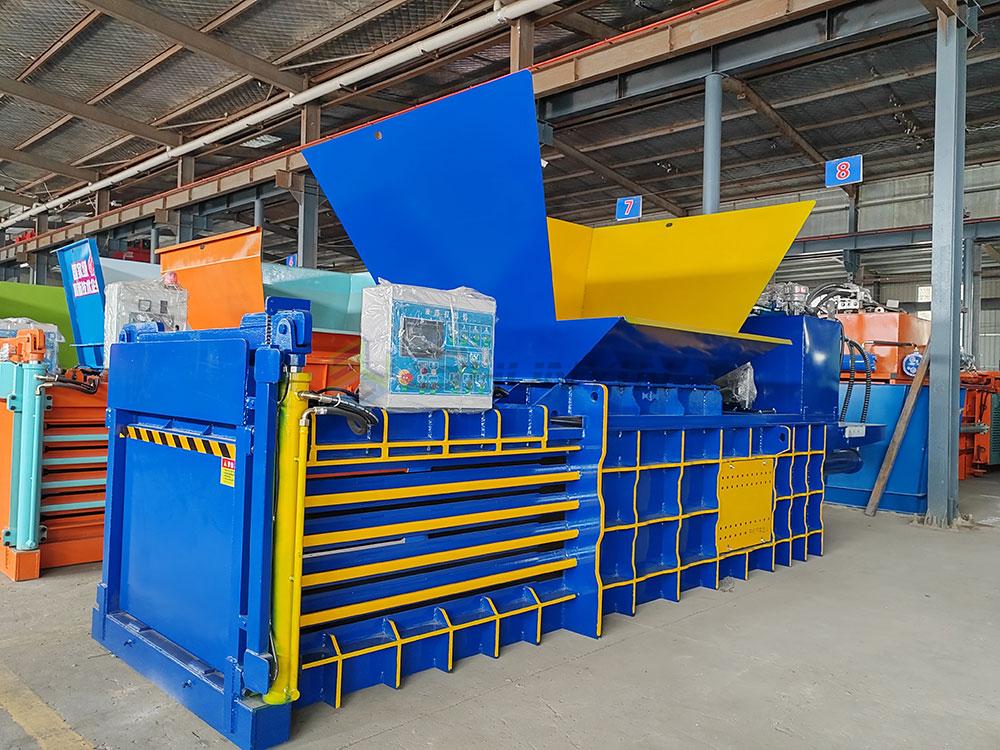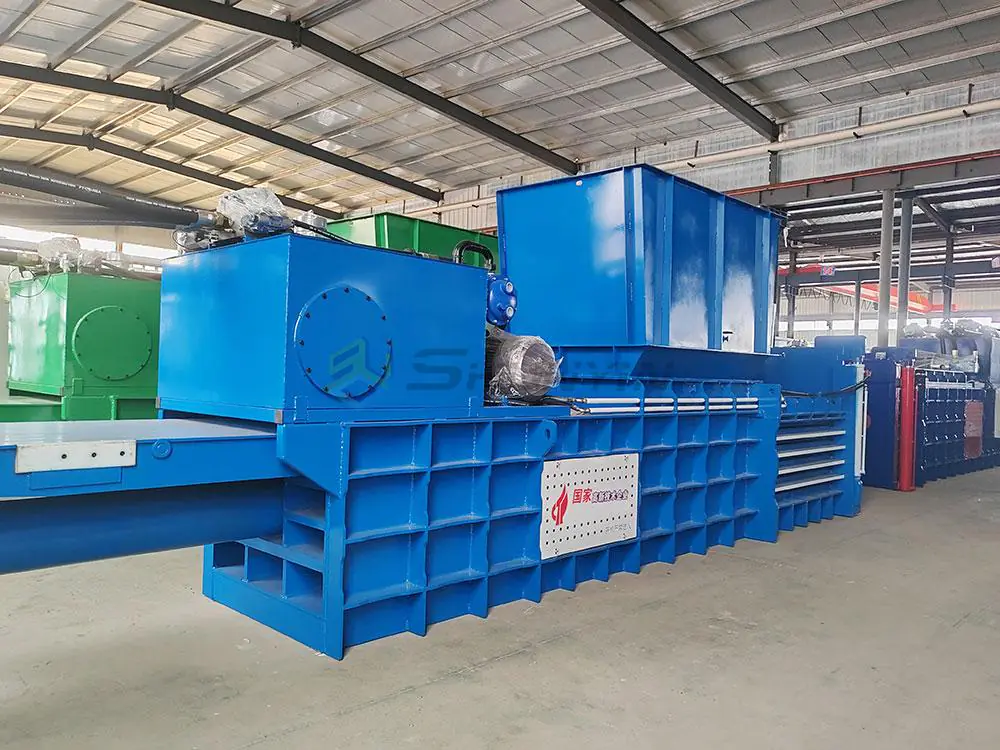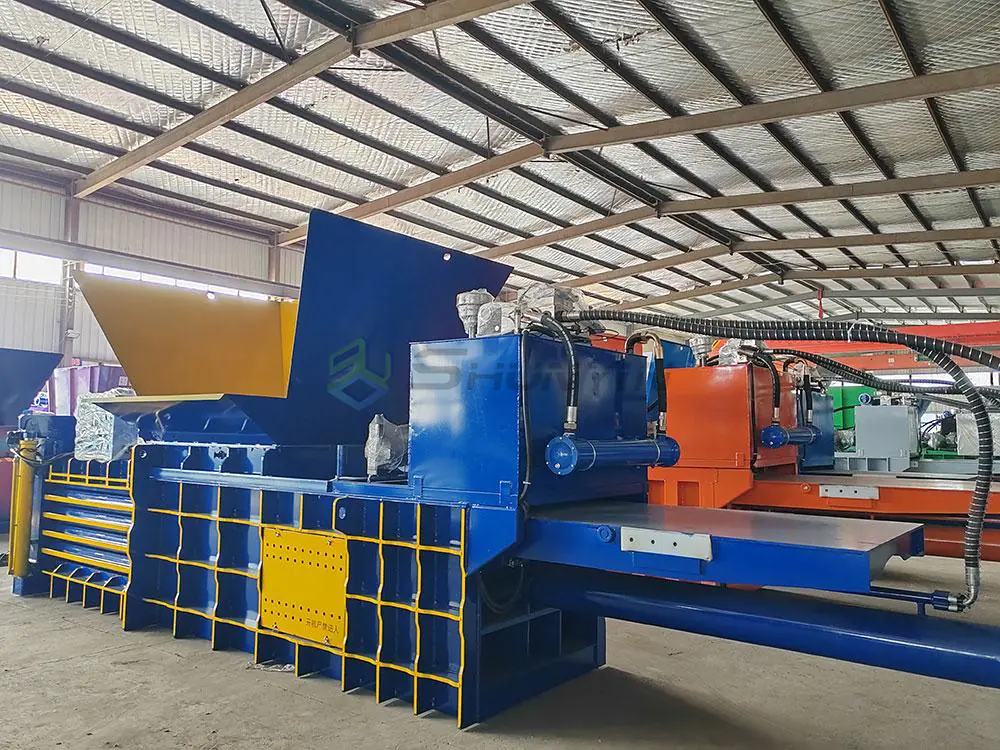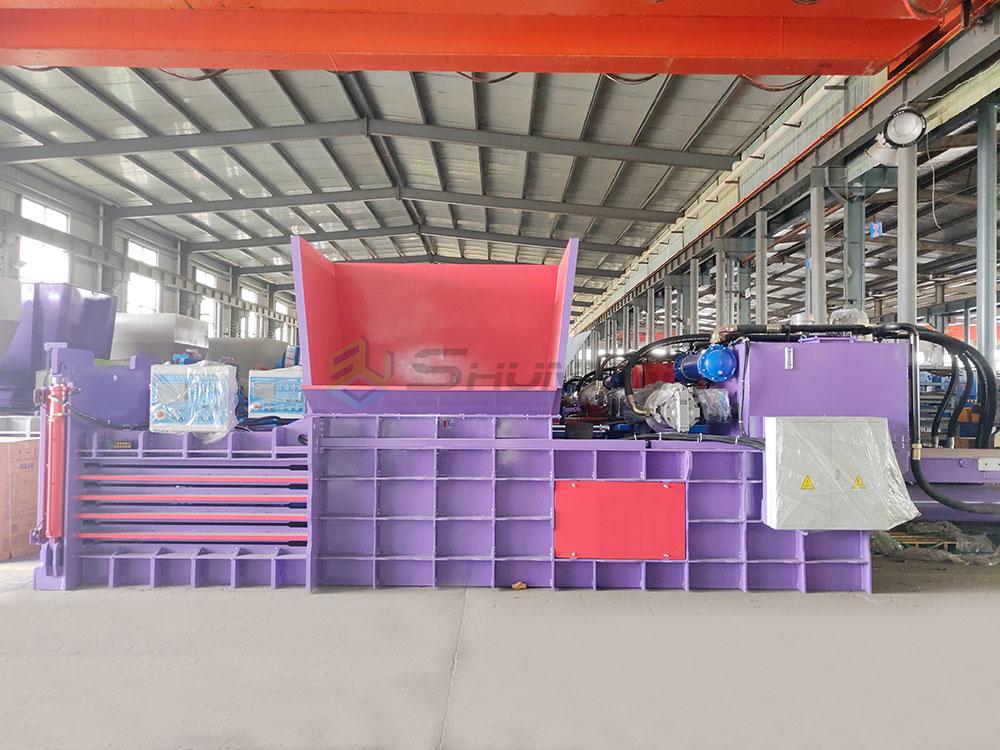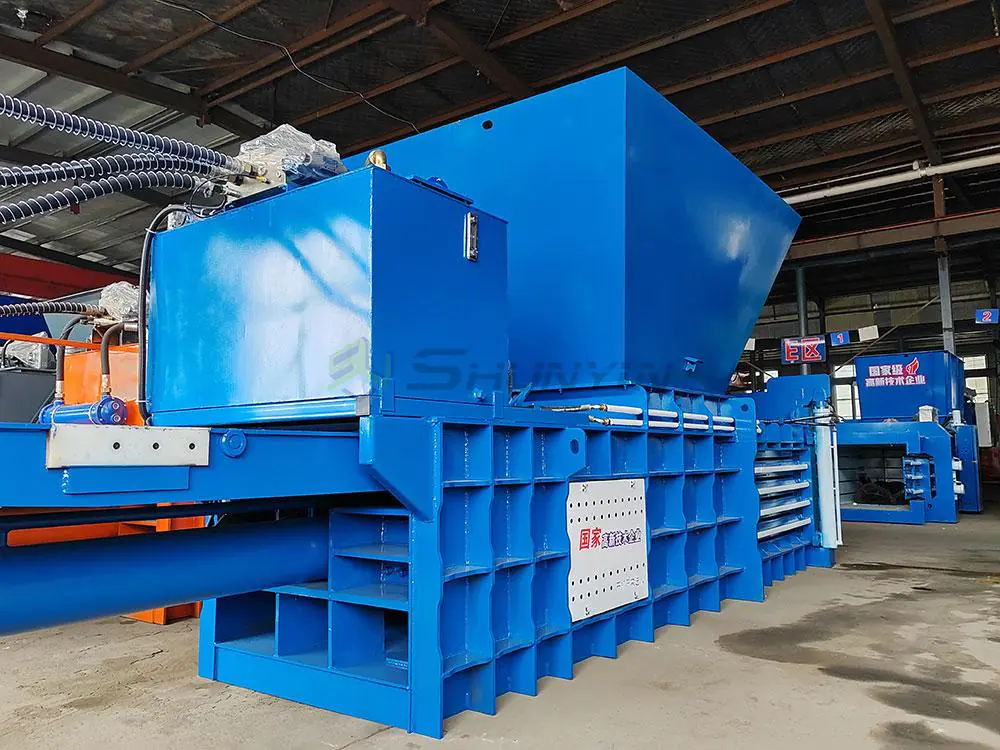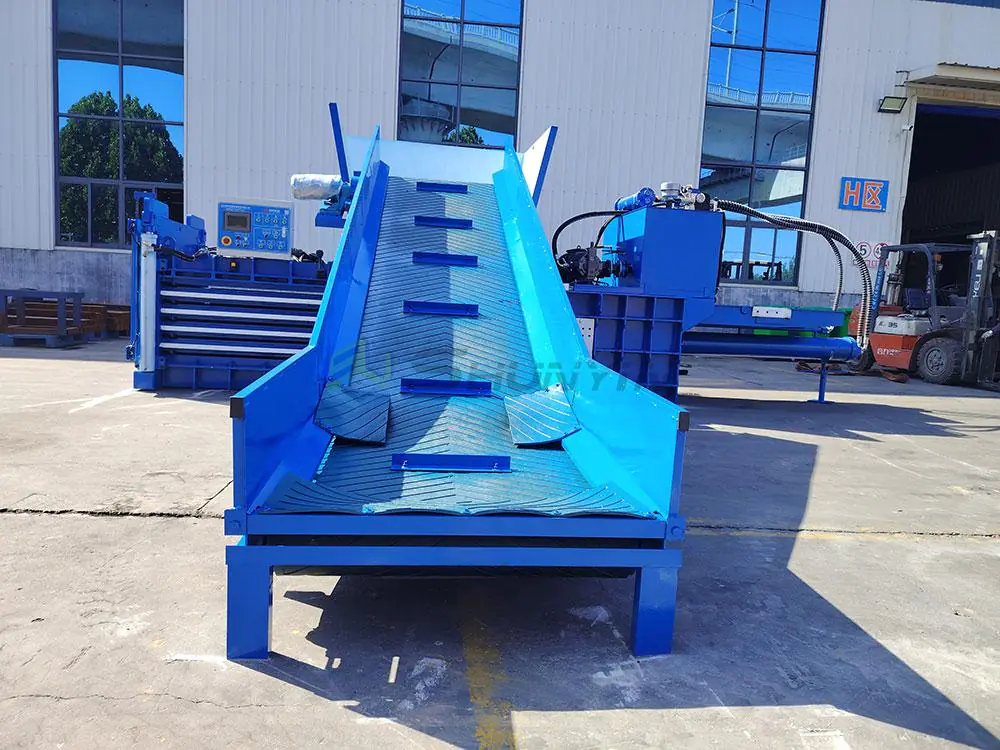
Over 400 million tons of cardboard get discarded globally each year. When one of our Canadian clients reduced his warehouse space costs by 60% after installing our horizontal baler, it revealed how machinery transforms waste into assets.
Recycling cardboard with balers can generate $80-$300 weekly for individuals and $2,500-$8,000 monthly for businesses through direct sales to recycling centers. Profit depends on cardboard collection volume (typically 3-8 tons weekly), local recycling rates ($35-$75 per ton), and operating costs including labor (15-25% of revenue) and baler energy consumption ($3-6 per bale).
My 12 years in hydraulic baler manufacturing taught me this: Your baler’s compression ratio (up to 5:1 density) directly impacts transportation savings – a 3m³ bale versus loose cardboard reduces truckloads by 80%. Let’s analyze this moneymaking process through four critical aspects.
Can You Make Money Baling Cardboard?
Dumpster diving for cardboard might not make headlines, but systematic baling does. One of our Texas clients earns $6,200 monthly from 22 stores’ packaging waste through our vertical auto-tie baler – proof this works at scale.
Yes, businesses and individuals profit from baling cardboard1 through multiple channels: selling to recyclers ($40-160/ton), reducing waste management fees ($120-400/month saved), and participating in environmental incentive programs (additional $25-75/ton). Profitability requires consistent supply (minimum 1.5 tons weekly) and proper bale density (800-1,200 lbs/cubic yard).

The 12 Variable Profit Formula
| Collection Source Potential | Typical Monthly Volume | Baling Cost Per Ton | Revenue Per Ton | |
|---|---|---|---|---|
| Retail Stores | High (consistency) | 8-12 tons | $18 | $140 |
| Office Complexes | Medium | 3-5 tons | $22 | $130 |
| Manufacturing Units | Very High | 15-30 tons | $15 | $150 |
| Residential Collection | Low | 1-2 tons | $35 | $120 |
Baling economics shifts with operational scale. Small enterprises using compact vertical balers (like our SYP-605 model) achieve 25% ROI within 8-14 months. Large operations utilizing horizontal balers (SYP-1200 series) reach 40% ROI faster through mass production of 1-ton bales (contact us for ROI calculator).
Material degradation matters: Stored cardboard loses 0.5%-1.2% value weekly. Our clients’ average 92% value retention comes from using our temperature-controlled compression chambers – this 8% advantage generates $640 extra monthly on 10-ton operations.
How Much Money Can You Make Recycling Cardboard?
Profit potential here isn’t linear. A Midwest recycling partner using six SYP-900 balers clears $28,000 monthly with 85% margin – their secret is combining cardboard with plastic film recycling.
Monthly cardboard recycling profits range from $1,100 (individuals) to $26,000 (commercial operations): Individuals earning $1.50-$4/hour from part-time collection vs. businesses making $8,000-$26,000 monthly via industrial systems. Key factors include regional pricing ($32-$90/ton), contamination control (<5% impurities), and baler throughput (600-2,000 lbs/hour).

The Hidden Costs Table
| Cost Factor | Small Scale (3T/month) | Medium Scale (15T/month) | Large Scale (50T/month) |
|---|---|---|---|
| Baler Electricity | $18 | $55 | $140 |
| Maintenance | $25 | $80 | $300 |
| Labor (Sorting) | $120 | $600 | $2,200 |
| Insurance | $15 | $45 | $150 |
| Storage | $30 | $75 | $180 |
Three profit multipliers our clients use successfully:
- Density Bonus – Achieving >1000 lbs/yard³ gains 8-12% price premium
- Volume Discounts – Exceeding 20 tons/month unlocks bulk rates (+$5/ton)
- Green Certification – LEED-certified recycling adds 15% value
Weather impacts profitability more than most realize. Humidity above 65% reduces bale weight by 7-12%. Our modular drying systems maintain 5% moisture content – this technical edge helps clients in Florida maintain 18% higher margins than competitors.
How Much Is Baled Cardboard Worth?
Pricing fluctuates like commodities. When OCC (Old Corrugated Containers) prices hit $165/ton in 2022, our clients with high-density balers captured 25% premiums through quality certifications.
Current baled cardboard values range $35-$185/ton ($0.018-$0.093/lb): Standard OCC at $35-$75, sorted corrugated at $55-$110, and certified contaminant-free bales up to $185. Value increases with compaction density (minimum 700 lbs/yard³ required by most mills), dryness (5-12% moisture), and certification (ISRI specs add 8-15%).

Bale Quality Matrix
| Grade A | Grade B | Grade C | |
|---|---|---|---|
| Density | 1000+ lbs/yd³ | 750-999 lbs/yd³ | 500-749 lbs/yd³ |
| Moisture | <8% | 8-12% | 12-15% |
| Impurities | <2% | 2-5% | 5-8% |
| Price/Ton | $85-$185 | $60-$100 | $35-$75 |
Regional comparisons reveal stark differences (2024 Q2):
- Midwest US: $45/T (high supply)
- Southeast US: $55/T (paper mill demand)
- Western Canada: $68/T (export advantage)
- Northern Mexico: $79/T (manufacturing boom)
Global demand changes game rules. Export-quality bales (meeting EN643 standards) to Asia currently fetch $14/T more than domestic US prices. We equip clients with EXW-compliant balers that produce internationally accepted bales – a key advantage in fluctuating markets.
How Much Do You Get Paid for a Bale of Cardboard?
Payment structures surprise new recyclers. Our New Jersey client negotiated $0.065/lb ($130/T) through guaranteed quarterly volumes – 22% above spot market rates.
Per bale payments span $14-$82 based on: Bale weight (standard 1,000-1,400 lbs), cardboard grade (OCC 11 vs. OCC 5), and market conditions. Current averages are $35-$55 per 1,200 lb bale ($0.029-$0.046/lb). Large contracts (>50T/month) secure 12-18% premium through price locking.

Payment Variables Breakdown
| Factor | Low Impact (-) | High Impact (+) | Premium Potential |
|---|---|---|---|
| Bale Weight | Incomplete bales (-15%) | Exact 1T bales (+7%) | Auto-weighing balers achieve 0.5% variance |
| Contaminants | Food residue (-25%) | Plastic wrap (-7%) | Optical sorting systems add $8/T |
| Certifications | None | ISRI/PSP (+9%) | Triple certification hits +15% |
| Payment Terms | Net 60 cashflow stress | Advance 50% (+market rise benefit) | Escrow payments protect price volatility |
Innovative partnerships boost earnings:
- Waste Management Sharing – Offset collection costs by 40%
- Reverse Logistics – Backhaul empty trucks (+$15/T)
- Carbon Credit Trading – $2.5/T additional (California CI-2024)
Our baler clients maximized 2023 profits through automated reporting – documenting each bale’s origin reduced quality disputes by 83% and accelerated payments by 17 days on average.
Conclusion
Calculating recycling profits requires measuring six variables: collection efficiency, baler performance, market timing, operational costs, quality control, and incentive utilization. With proper equipment like our ISO-certified balers producing 1T bales in <10 minutes, businesses achieve 19-38% ROI annually.
Start your customized profitability analysis now – our engineers will calculate your specific potential based on local rates and operational scale. Don’t let cardboard waste your money – compress it into profits.
-
Explore this resource to understand the financial benefits and strategies for businesses involved in baling cardboard. ↩


